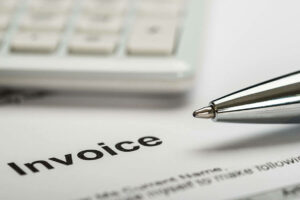
The board must oversee the planning and management of the reserve fund, which is set aside for major repairs and replacements of common elements such as roofs, roads, and amenities. Board members need to ensure that the reserve fund is adequately funded and that funds are invested wisely to maximize returns without taking on excessive risk. In certain circumstances, such as unforeseen weather-related damages or emergencies, it may be necessary to adjust the HOA statement to account for these unexpected expenses. Larger expenditures, such as pool refurbishment or roof repairs, can often be planned in advance and covered with reserve funds.

Welcome To Community Financials
While accountants and finance specialists are trained to read and understand these documents, many business professionals are not. In terms of revenues, https://www.bookstime.com/ the association records them when it earns them, not when it receives them. An asset section of the Balance Sheet titled Assessments Receivable appears.

Association Management and Vendor Relationships
Assess whether the disbursements align with the community’s needs and budgetary allocations. As a title professional, focus on the percentage of residents delinquent and the total amount owed. High delinquency rates or large outstanding balances can indicate financial instability within the HOA, potentially affecting property values and the attractiveness of the community. Assess the impact of these variances on the HOA’s overall financial health, particularly in relation to reserve funding and special assessments. Look for patterns or trends that could affect property values and transaction viability.
- The Cash Flow Statement offers insights into the HOA’s liquidity and solvency.
- The income statement allows homeowners to gauge the financial performance of the HOA and ascertain its ability to cover expenses and generate a surplus.
- Whether you are a current or prospective homeowner within an HOA, understanding these statements will empower you to actively participate in the financial decision-making process of your community.
- Each accounting method comes with unique advantages with a different effect on HOA finances.
- When analyzing these ratios, it is essential to consider trends over time and compare them to industry standards or associations of similar size and scope.
- Though it is not an HOA’s main goal to earn a profit, a net loss would indicate that the community had more expenses than revenue streams in the past period.
- Yet even if you use these services, it is vital to comprehend HOA financial management.
Who Should Prepare Financial Statements?

Here, you’ll need to determine the level of equity relative to the association’s total assets. That will show you what the HOA’s financial cushion is available to cover liabilities. An HOA Income Statement, also known as the Profit-Loss Statement or the Statement of Income and Expense, details the association’s revenues and expenses over a specific period, usually a month, quarter, or year. So, let’s drill down on what the HOA financial statements are, what each specific document within them means, and what insight they give title and escrow professionals. These various types of HOA financial reports are essential in getting a clear picture of how healthy the finances of the HOA are.


Soon after each month ends, the bank usually mails a bank statement to the association. The bank statement lists the activity in the bank account during the recent month as well as the balance in the bank account. That bank statement also becomes a part of the Financial Statements provided to the board of directors for review. While most associations will have both a reserve hoa accounting and an operating fund, many associations may have other funds. For example, there may be a cost center that provides services to only one sub-set of homeowners; those expenses, and sometimes the revenue against them, need to be tracked separately. It offers a snapshot of the association’s financial health, detailing what the HOA’s assets, liabilities, and the net worth.
How Revenues and Expenses are Recorded
- Including a breakdown of fees in the HOA statement benefits homeowners by providing transparency and clarity regarding the total fee amount.
- The accounts payable is similar to the accounts receivable report but in reverse.
- It allows homeowners to actively participate in the financial management of their community and make informed decisions that benefit all members.
- In doing so, they can interpret the reports accurately and make smarter financial decisions.
- Both balances may need adjustment in order to report the true amount of cash.
- You can automate the process around HOA statements by using HOA management software such as Smartwebs.
- The board’s role in financial management can vary depending on whether the association has a management company, the size of the community, and the association’s bylaws.
- All parties must understand the HOA management company’s responsibilities, so obligations don’t slip through the cracks.
- As with the AR report, it may also show how long each account has remained unpaid.
- From these two examples, you can understand why there will likely be a difference in the balance on the bank statement vs. the balance in the Cash account on the association’s books.
